How to improve and upgrade the photovoltaic junction box
The PV junction box is essentially a connector, which can connect the solar cell module array with the solar charging control device. The PV junction box is mainly used to connect and protect the solar PV modules.
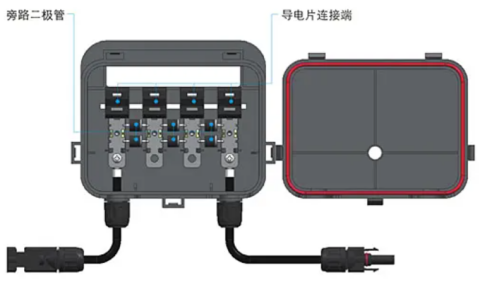
The PV junction box can transfer the power generated by the solar PV module to the external circuit to realize the power transmission function. Therefore, the performance of photovoltaic junction box is crucial.
At present, photovoltaic junction boxes can be divided into two types according to their different processes: gel filled and non gel filled. The advantages and disadvantages of these two different types of photovoltaic junction boxes are analyzed below to explore the performance of photovoltaic junction boxes.
Glue filled photovoltaic junction box
The glue filled photovoltaic junction box is small in size, and the glue filled measures are adopted in the design, which has good waterproof performance and can reach the protection level of IP68.
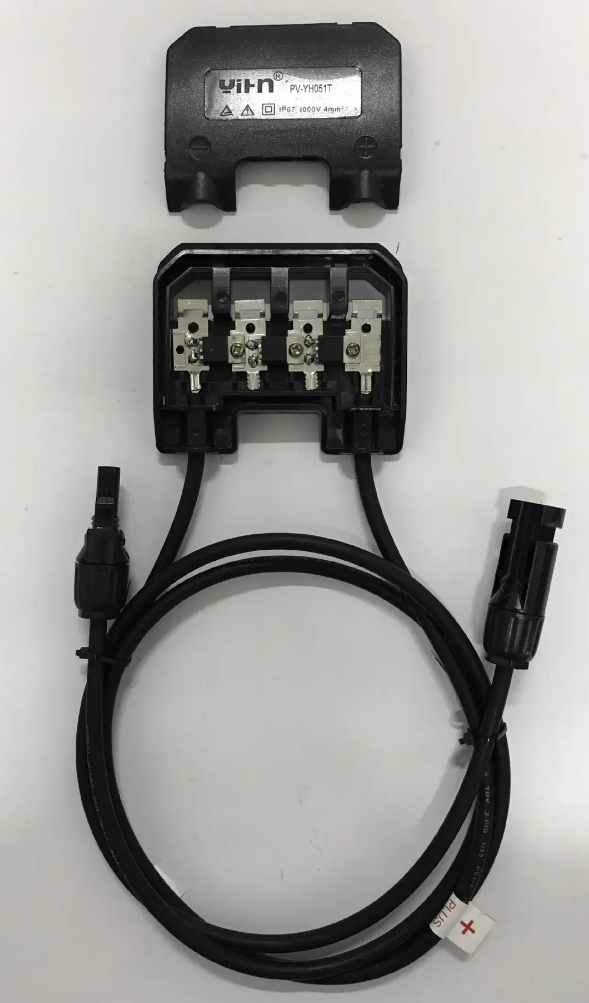
In addition, the thermal conductivity of the glue filling material used in the glue filling type photosynthetic junction box is 0.3W/m · K, which is much higher than the thermal conductivity of the air in a closed environment. Therefore, the glue filling material has good thermal conductivity and heat dissipation, which can emit the generated heat in time, and reduce the impact of temperature on the performance of the photovoltaic junction box.
However, the glue filling materials to be purchased for the glue filled photovoltaic junction box will increase the cost of the photovoltaic junction box to a certain extent, and once the device fails, it is difficult to disassemble and repair, affecting the use and performance of the photovoltaic junction box.
Non gel filled photovoltaic junction box
The non gel filled photovoltaic junction box can be disassembled freely. Once the device fails, the device can be disassembled and repaired immediately without affecting the service performance of the photovoltaic junction box. When the non glue filled photovoltaic junction box reaches its service life, the parts inside the module can be disassembled and recycled at will to improve the material utilization efficiency.
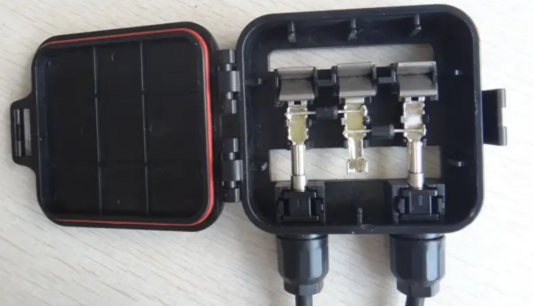
However, as the non gel filled photovoltaic junction box does not use gel filling materials, the sealing performance and waterproof performance of the photovoltaic junction box will be reduced. At this time, with the extension of the use time of the photovoltaic junction box, the device will continue to age, and the performance will continue to decline. At present, the protection level of the most widely used non gel filled photovoltaic junction box is generally IP65.
Pain points of ordinary photovoltaic junction box
The circuit of the ordinary photovoltaic junction box is mainly composed of a battery chip and a diode. The diode is connected with the battery chip in parallel to balance the current. The circuit structure is shown in Figure 1.
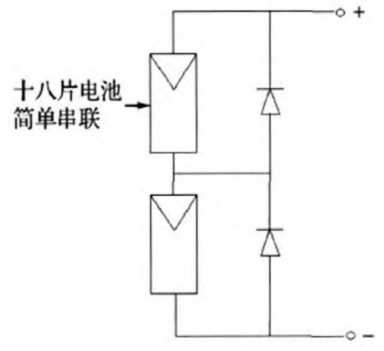
Figure 1 Equivalent circuit of junction box circuit
Due to the influence of factors such as solar radiation angle and surrounding shelter, solar cell modules may be partially exposed, resulting in hot spots. At this time, the temperature in this area will reach about 200 ℃. In the high temperature state, the solder joints inside the photovoltaic junction box melt and the sealing property of the packaging material decreases, reducing the performance of the photovoltaic cell array. Therefore, in order to effectively protect the performance of the cell array in the cell module, the parallel diode is used to balance the current during the structural design, effectively avoiding the impact of hot spots on the photovoltaic module.
The diode is a highly sensitive electronic component with a voltage drop of 1V on both sides. When the current flowing through the diode is 10A, the diode will consume 10W power, causing power loss of electronic components. In addition, the diode is sensitive to temperature. In the high temperature state, the diode will be burned out, unable to balance the current, and eventually burn out the photovoltaic junction box.
At present, Schottky diode is used in photovoltaic junction box, and its voltage drop in practical application is 0.5~0.7V. At this time, although the power consumption will be slightly lower than that of ordinary diode, there is still a large power loss. In addition, the reverse leakage current of the Schottky diode is much larger than that of the ordinary diode, which will also produce a certain amount of power loss. Therefore, for the photovoltaic junction box, whether the ordinary diode or the Schottky diode is used, there will be power loss, which is also the pain point of the current photovoltaic junction box performance design.
How to optimize and improve ideas
The PV junction box balances the current through the bypass diode, thus playing the role of protecting the PV junction box. However, once one of the components of the device is damaged or fails, the junction box will directly flow through the diode to form a complete circuit, which will reduce the power generation of the entire PV module, thus causing a series mismatch of the battery modules, reducing the power generation efficiency of the PV module, The appearance of intelligent junction box can solve this problem well.
The intelligent junction box is an optimized device based on the traditional junction box. The device can track the maximum power of a single module in real time, so as to ensure that each photovoltaic module can reach the maximum output power and reduce the impact of mismatch on power generation efficiency.
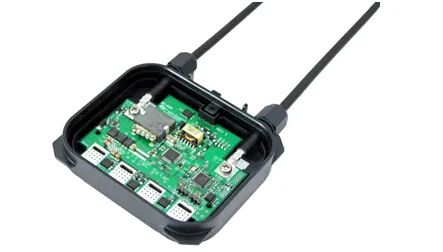
In order to effectively improve the conversion efficiency of solar energy, the intelligent photovoltaic junction box needs to control the output power of the module and use MPPT (maximum power point tracking) technology to control it near the maximum power.
Under the MPPT technology, the current, voltage, power and other parameters of the module can be measured to determine the output power of the module, and then the peak (maximum power) position can be determined through self optimization, and the operating voltage, current and other parameters of the module can be controlled through self adjustment to move the actual output power to the maximum power. According to the test of practical experience, it is found that the conversion efficiency of the intelligent junction box is improved by 20% to 30% under the MPPT technology.
By testing the P-V curve of photovoltaic modules, the test results are shown in Figure 2.
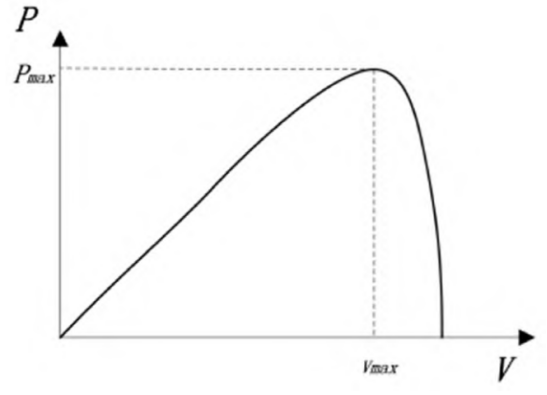
Fig. 2 P-V Curve of PV Module
It can be seen from the figure that there is a certain relationship between the output power of the photovoltaic module and the actual voltage. Before the voltage reaches the maximum output voltage Vmax, the output power will increase with the voltage increasing. When the actual voltage reaches the maximum voltage Vmax, the output power of the module will also reach the maximum output power Pmax.
Later, when the actual voltage exceeds the maximum output voltage Vmax, the actual voltage increases, but the output power Pmax will continue to decline. From the P-V curve, it can be learned that in order to achieve the maximum output power Pmax, the actual output voltage of the component needs to be controlled at the maximum voltage Vmax. The intelligent junction box MPPT technology is to track the power change in real time, and control the actual output voltage near Pmax by controlling the actual output voltage.
According to the above analysis of MPPT technology, the essence of MPPT technology is to self optimize the actual output power of modules, and control the output power by adjusting the actual output voltage. Therefore, optimization and improvement can be made based on this in the design of photovoltaic junction box.
Design of intelligent photovoltaic junction box
In this paper, 250W photovoltaic modules are selected for research when designing the photovoltaic junction box, and then the communication system is designed using the organizational structure of MPPT+DC/DC+wireless communication.
Relevant parameters of 250W photovoltaic module are as follows: open circuit voltage is 42.4V, short circuit current is 7.6A, working voltage is 34V, working current is 7.3A, and peak power is 250W.
The communication system combining MPPT+DC/DC+wireless communication can detect the actual output power of photovoltaic modules in real time. The intelligent photovoltaic junction box system mainly includes seven different control modules< br/>
Power supply system module
This module is mainly used to convert the actual voltage output by photovoltaic modules into systems with different voltage levels, such as 5V, 10V, 15V, so as to provide power for other modules. The 5V voltage can supply power to the single chip microcomputer in the control center, thus driving the single chip microcomputer to realize various control commands. 10V voltage can provide analog power supply for the drive module. 15V can provide digital power supply for wireless communication module, drive each wireless module to operate, and realize data transmission function< br/>
Detection circuit module
The detection circuit is mainly used to detect the voltage, voltage and temperature in the photovoltaic module, so as to adjust the relevant parameters according to the detection results and realize the self optimization control function.
First of all, the voltage detection function is mainly realized by the way of voltage divider detection. During voltage detection, 1% precision voltage divider will be used for voltage division, and then the voltage data collected after voltage division will be collected and converted through the AD port.
At this time, in order to ensure the accuracy of the collected voltage data and reduce the influence of the interference signal on the voltage signal, a 0.01 is often connected in parallel at the AD port μ F capacitance. After AD port conversion, the voltage will be directly transferred to the microcontroller for processing, and the corresponding control command will be issued. However, since the power supply voltage of the microcontroller is 5V, the voltage after AD port conversion is required to be below 5V.
In general, the output voltage of the PV module is between 30~40V. At this time, the resistance voltage divider can be used to reduce the voltage value collected by the AD port. The voltage detection circuit is shown in Figure 3.
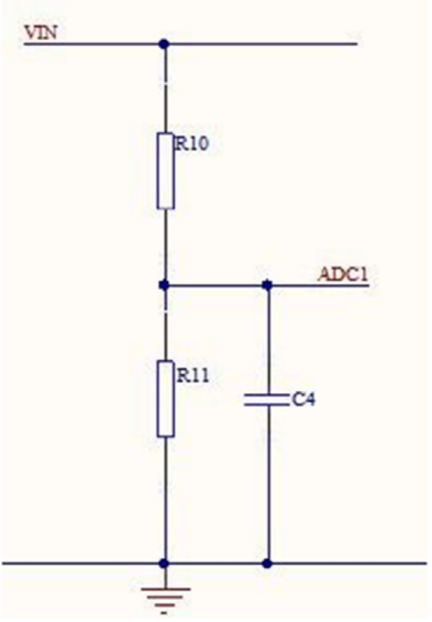
Fig. 3 Circuit diagram of voltage detection
Assuming that the maximum output voltage of the PV module is 60V, the acquisition voltage of AD port is required to be 5V. At this time, R11 ∶ R10=1 ∶ 11 is required, and the resistance values of the two resistors are 10K Ω and 110K Ω respectively. The magnification is 1/12.
Secondly, the data sampling method used in current detection is the high side current detection method. In this way, the sampling resistance is placed between the positive pole of the voltage and the load, which can effectively reduce the impact of ground wire and other interference signals on the voltage value of the sampling resistance, so as to quickly identify the actual current.
When sampling, if the power supply and other circuits fail, the device can quickly detect the short circuit current in the circuit, so as to display the fault information. The current detection circuit is shown in Figure 4.
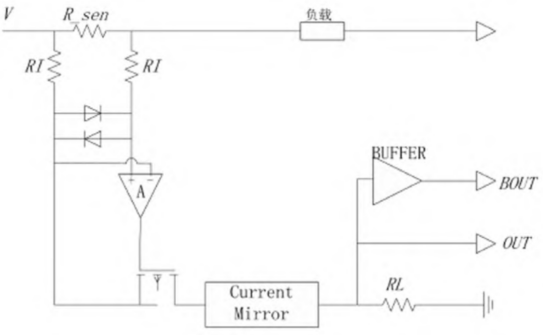
Fig. 4 Current detection circuit diagram
Sampling resistance R in the main circuit in the current detection circuit_ Sen is connected to the load in series. At this time, there will be a voltage drop on both sides of the sampling resistance. In order to detect the current flowing through the sampling resistance, operational amplifier A is used to absorb the current in the design. At this time, the current will flow through the resistance RI, so the voltage on both sides of the resistance RI is equivalent to the sampling resistance R_ The voltage on both sides of sen.
In the current detection circuit, one end of the resistance RL is connected with the output voltage Vout, and one end is converted into the drive voltage. The output voltage Vout will output the detection current in real time through the action of the voltage follower.
The resistance values of RI and RL resistors selected in the design are 20K Ω and 500 Ω respectively.
Finally, the chip SM72480 is mainly used for temperature measurement. The operating temperature of the PV module during normal operation is between - 40 ℃ and 85 ℃. If the actual operation is not within this range after measurement, it means that the module is operating under non operating conditions. The chip SM72480 has the characteristics of high measurement accuracy, dual output, low power consumption and so on, so it is widely used in temperature detection and has good detection effect.
The chip SM72480 uses a 5V power supply. At this time, the stable signals output by the chip include digital signals and analog signals. The digital signals represent the upper and lower limits of the detection temperature. When the actual temperature exceeds the upper and lower limits, pin 5OVERTEMP of the chip SM72480 will change to high level and pin 3 will change to low level, Output the actual temperature in the form of analog signal. Pin 1TRIPTEST is grounded, and pin 6VTEMP can output actual voltage analog signal according to temperature.
Power management and reset circuit
The main function of this circuit is to control the working power supply of the system and ensure that the power supply is controlled in a stable output state. When the power supply receives the reset control command, it will reset the system.
Control Center
The control center mainly receives various test data, analyzes and processes the test data, and issues various control commands. The control center is the basis for PV junction box to realize various controls. The BUCK-BOOST circuit is used in the main circuit of the photovoltaic junction box to realize various control functions.
Drive circuit
The main function of the drive circuit is to provide driving force for the control signal, so as to improve the driving ability of the control signal, so as to adjust and control the output voltage under the action of the driving force.
Communication module
The main function of the communication module is to collect and transmit data, and feed back control instructions through the function of the communication module to provide control signals for the device.
Protect the circuit
The main function of the protection circuit is to protect the component devices and ensure the normal operation of the system by analyzing the overcurrent, overvoltage and other information that may be generated by the components.
Program Design
The intelligent photovoltaic junction box can automatically realize various intelligent control functions. This paper mainly analyzes the main program process and temperature detection process to achieve the automatic control effect of the intelligent photovoltaic junction box.
Main program flow
The main program control flow of the intelligent photovoltaic junction box designed in this paper is as follows.
After the MCU is powered on and reset, the system will initialize the registers, variables, interfaces, serial ports, etc. After initialization, all parameters of the system will return to the default initial state. Then the system will output the default duty cycle through PWM, and then the data system will have an appropriate voltage. The control system starts to work and collect relevant data parameters.
After data acquisition, the control system will jump into the calculation subprogram, call the MPPT algorithm in the subprogram to calculate the collected data information to obtain the current actual output parameters, and return to the main program. In the main program, the parameters calculated in the calculation subprogram will be output through the action of PWM wave, and the PWM duty cycle will be updated, then the cycle operation will be carried out, and the data information collection will continue until the PWM duty cycle output meets the requirements of the output parameters, so as to achieve the purpose of parameter adjustment.
Temperature detection process
Temperature is the main parameter that affects the performance of the photovoltaic junction box. Once the temperature is abnormal, it will directly affect the performance of the photovoltaic junction box, and even damage the device. In this paper, the temperature of the photovoltaic junction box is monitored in order to achieve real-time tracking and control of temperature. In the temperature detection, the real-time temperature will be collected through the function of the intelligent junction box, and then the collected real-time temperature will be compared with the safe temperature.
If the real-time temperature has exceeded the safe temperature range, the system will directly send an alarm message and notify relevant personnel to take temperature control measures. If the real-time temperature is within the safe temperature range, the system will enter the cycle program, continue to collect temperature information and compare.
This paper analyzes the types of photovoltaic junction boxes and the pain points of photovoltaic junction boxes through the research on photovoltaic junction boxes. Then, aiming at the power loss caused by photovoltaic junction boxes, MPPT technology is proposed to control the power of photovoltaic junction boxes and control them near the maximum power point. Finally, the hardware and software design of photovoltaic junction boxes are optimized.
In this paper, 250W photovoltaic modules are selected for analysis, and then the hardware circuit of the intelligent photovoltaic junction box is determined from the analysis of the system structure and circuit structure of the hardware. Finally, the flow design is carried out from the main program and temperature detection program, which provides theoretical guidance for the design of the intelligent photovoltaic junction box.
